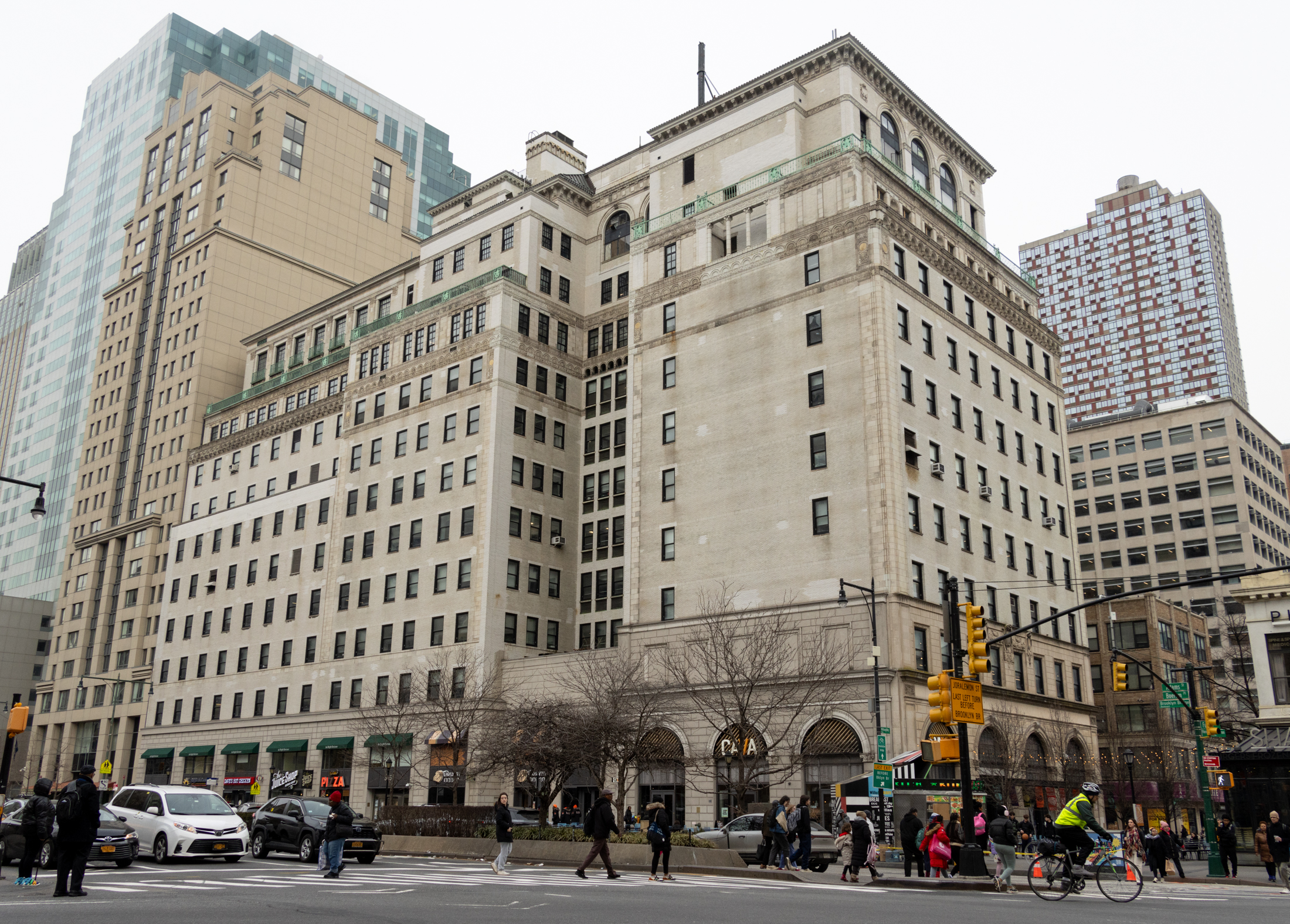Building of the Day: 348 Park Avenue
Brooklyn, one building at a time. Name: Former Rigney Candy Company, now Public Storage Address: 348 Park Avenue Cross Streets: Corner Emerson Place Neighborhood: Wallabout Year Built: 1920 Architectural Style: Reinforced concrete factory Architect: Helmle & Corbett Other Work by Architect: Bossert Hotel in Brooklyn Heights, Jenkins Storage on Nostrand Ave, Bed Stuy, Boathouse and Tennis…

Brooklyn, one building at a time.
Name: Former Rigney Candy Company, now Public Storage
Address: 348 Park Avenue
Cross Streets: Corner Emerson Place
Neighborhood: Wallabout
Year Built: 1920
Architectural Style: Reinforced concrete factory
Architect: Helmle & Corbett
Other Work by Architect: Bossert Hotel in Brooklyn Heights, Jenkins Storage on Nostrand Ave, Bed Stuy, Boathouse and Tennis house, Prospect Park. Communications Center, behind Botanic Gardens, among others.
Landmarked: No, but part of a proposed Wallabout Industrial District.
The story: The Wallabout industrial district was home to a great many food companies. The great Wallabout Market was here, a huge wholesale and retail market, similar to Hunt’s Point in the Bronx, where all kinds of foods were sold, mostly on a wholesale basis. Fish, meat, produce, bakery items, and other foodstuffs were traded here, with goods going near and far. Around the Market, food related factories were established, producing baked goods, candy and sugar products, and much more. Other buildings held warehouse space for the many wholesale grocers who sold their products to local stores as well as to merchants across the country. In its heyday, the smell of all of the food industry products must have been overwhelming.
Candy and sugar goods were especially prevalent here, probably due to the close proximity of the sugar manufacturers in Williamsburg. The huge Rookwood Chocolate Company was in the area, expanding right and left out of the old Von Glahn Brothers warehouses. Smaller candy companies were scattered throughout the district. This building was built in 1920 for the Rigney Candy Company, a company that had been in business since 1893. Rigney was the largest American manufacturer of rock candy, a staple of candy stores, general stores and confectioners of the day. They also were a manufacturer of hard candy, cough drops and other medicinal candies. They were a packer of maple sugar products, and manufactured “Rigcole,”a glycerin substitute used by pharmacists and candymakers.
The building was designed by Frank Helmle of Helmle & Corbett, one of the best in the business at the time. Helmle was an excellent architect whose buildings have been on these pages many time. He was responsible for many glamorous and elegant buildings, including the Prospect Park Boathouse and the Bossert Hotel, his most well-known buildings. This plain factory would seem to be a letdown, but even famous architects have to pay their mortgages. Helmle worked here with the Turner Construction Company, an expert in the new reinforced concrete construction, which was taking over warehouse and factory construction. Turner Construction was founded by Henry Turner in 1902, and is still going strong today.
Rigney was a very profitable and successful company, and was traded on the Stock Exchange. So successful that it survived its biggest scandal, when in 1927, it was revealed that its long time bookkeeper had been quietly skimming off the top, and in the space of six years, had stolen $23,000. The bookkeeper, 26 year old William Prepiak, confessed to police that he had spent every cent, losing it all to horse racing, dice and night clubs. He was arrested and convicted of grand larceny.
Unfortunately, by the mid-1930s, the company was in receivership, having lost millions in the upheavals of the Great Depression. They went out of business; the building was sold, and became a warehouse and storage facility for various companies until it was made into a self-storage company in 2001. GMAP
(Photo: Christopher Bride for PropertyShark)










What's Your Take? Leave a Comment